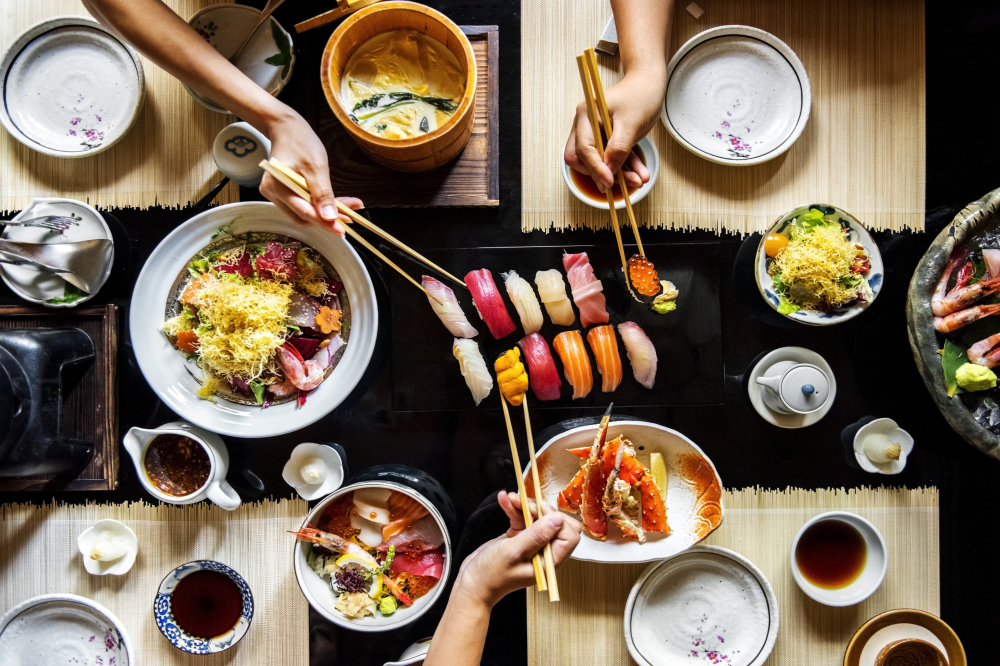Japanese cuisine is undoubtedly delicious, but it's also incredibly healthy.

Why the Japanese diet is one of the healthiest in the world
According to the OECD, the average life expectancy for Japanese men and women is 84.2 years old. This is the highest age for any of the countries surveyed – compare it to 81.3 in the UK and 78.6 in the US.
Diet plays a leading role in health, so it's safe to assume there's a link between life expectancy and what's on the menu. Japanese food tends to be well-balanced, largely unprocessed and full of nutrients, and luckily, there are plenty of aspects you can adopt into your own diet. So, how is it so good for you?
Japanese people eat an astounding amount of fish. According to 2011 data from the European Commission, Japan consumes 7.4 million tonnes of seafood a year.
Seafood is incorporated into Japanese dishes in a multitude of ways, whether it's in sushi, sashimi, tekkadon or more. This emphasis on fish has lots of health benefits – studies have shown eating more fish can boost your IQ, ward off stroke and lower your risk of bowel cancer – and those are just some on the long list of positives.
Few cuisines include quite so many variations of fermented soy as Japanese. These are soybeans that have had some kind of bacteria or yeast introduced to them.
A recent study published in the British Medical Journal found "a higher intake of fermented soy was associated with a lower risk of mortality". Many Japanese people would benefit from these positive effects of fermented soy, thanks to things like miso soup, soy sauce, pickled tofu and natto – a sticky and slimy dish of fermented soybeans, which has a distinctive smell and is often eaten at breakfast.
One of the best things about the Japanese cuisine is how little of it is processed. Instead, there's a focus on fresh ingredients, simple types of food, and seasonal produce.
Overly processed foods tend to have more sugar, salt and additives than unprocessed meals, so it can only be good for your health if you follow the Japanese ethos of relying on whole foods. Plus, when ingredients aren't processed, they're more likely to retain good stuff like nutrients and fibre, which can help boost a healthy diet.
Unlike many diets all over the world, there's not a huge emphasis on fried foods in Japan. Instead, meals tend to be cooked by healthier methods like steaming, boiling or pickling, which are a lot less calorific and fatty than frying.
This doesn't mean there's absolutely no frying – after all, delicacies like tempura and tonkatsu are deep-fried – but it means there's a bit more balance, and not everything is cooked in oil.
Portions are reasonably sized

In western restaurants, portions have been steadily growing over the years. This is problematic, particularly as many of us are likely to finish everything on our plate, rather than stopping when we're full. However, this isn't the case in Japan. Portions tend to be moderate, and instead of one plate piled high with food, you're more likely to be served little bowls and plates of different things.
This goes hand in hand with a Japanese ethos 'hara hachi bu' – stopping eating when you're about 80% full. This means you don't stuff yourself until you feel sick, but have more restraint and eat in moderation. If everyone followed this mantra, obesity levels could plummet.

